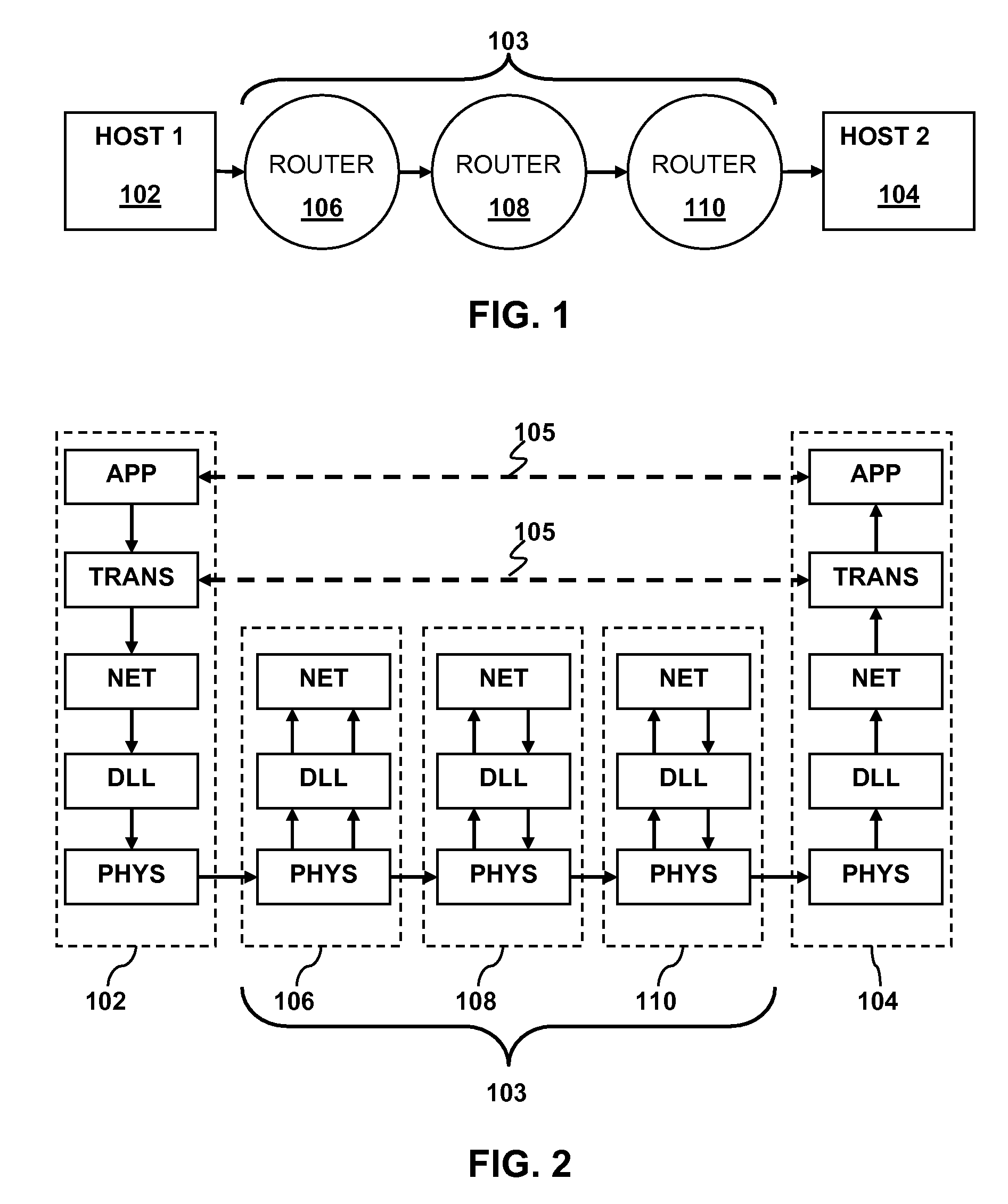Network bandwidth detection and distribution
a network bandwidth and detection technology, applied in the field of network bandwidth detection and distribution, can solve the problems of large latency, difficult initial bandwidth estimation, and long recovery tim
- Summary
- Abstract
- Description
- Claims
- Application Information
AI Technical Summary
Problems solved by technology
Method used
Image
Examples
Embodiment Construction
[0024]Although the following detailed description contains many specific details for the purposes of illustration, anyone of ordinary skill in the art will appreciate that many variations and alterations to the following details are within the scope of the invention. Accordingly, the exemplary embodiments of the invention described below are set forth without any loss of generality to, and without imposing limitations upon, the claimed invention.
TECHNICAL BACKGROUND
[0025]Embodiments of the present invention may be understood in the context of network communications. FIG. 1 illustrates an example of network communication between Host 1102 and Host 2104. By way of example, the hosts may be any network capable device. Such devices include, but are not limited to computers, hand held internet browsers and / or email devices, Voice over Internet Protocol (VoIP) phones, video game consoles, hand held video game devices, and the like. Messages from Host 1 travel to Host 2 over a network path...
PUM
 Login to View More
Login to View More Abstract
Description
Claims
Application Information
 Login to View More
Login to View More - R&D
- Intellectual Property
- Life Sciences
- Materials
- Tech Scout
- Unparalleled Data Quality
- Higher Quality Content
- 60% Fewer Hallucinations
Browse by: Latest US Patents, China's latest patents, Technical Efficacy Thesaurus, Application Domain, Technology Topic, Popular Technical Reports.
© 2025 PatSnap. All rights reserved.Legal|Privacy policy|Modern Slavery Act Transparency Statement|Sitemap|About US| Contact US: help@patsnap.com



